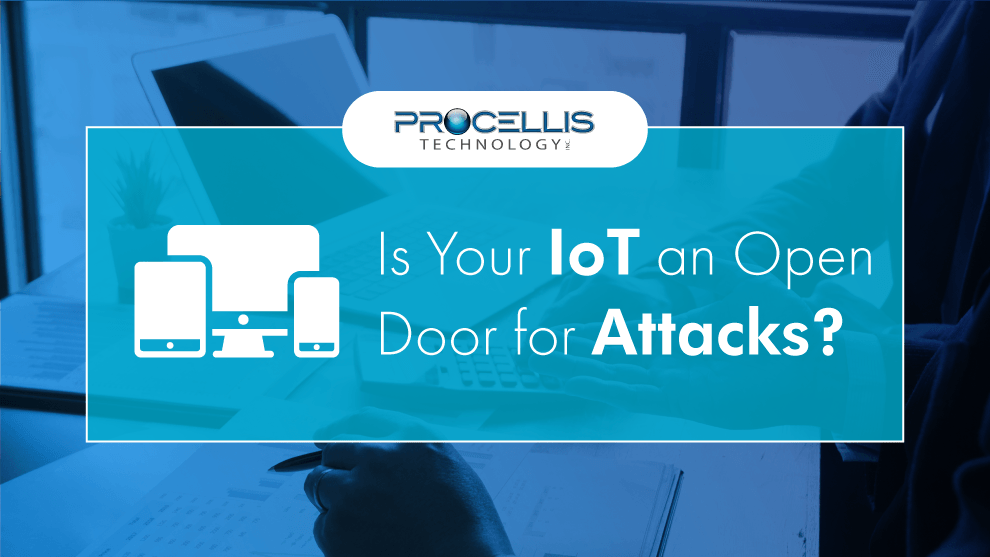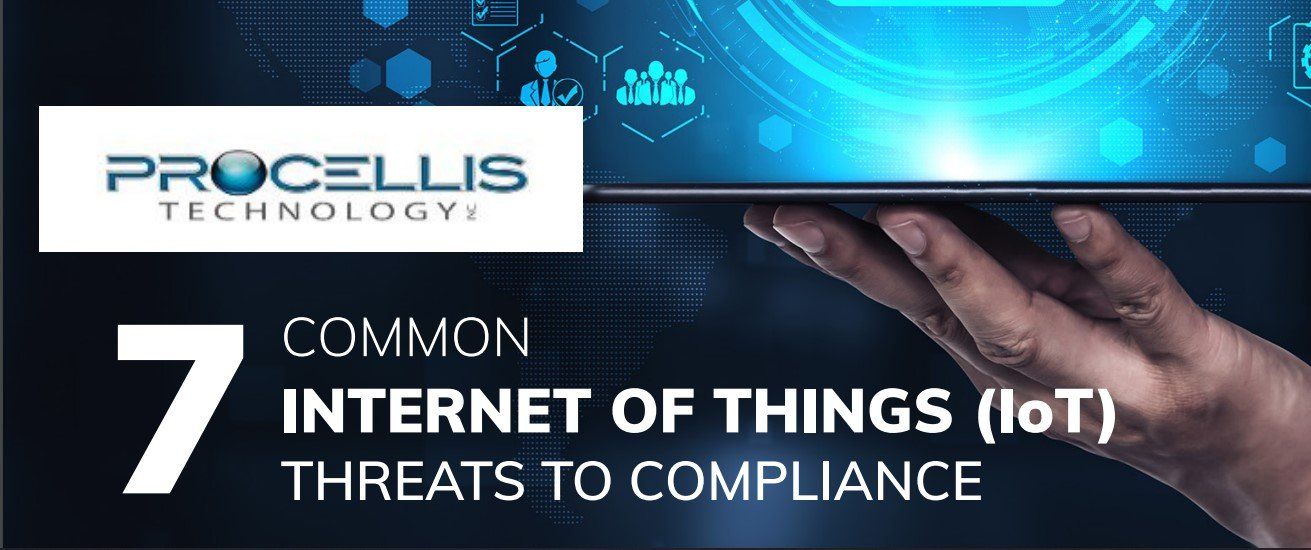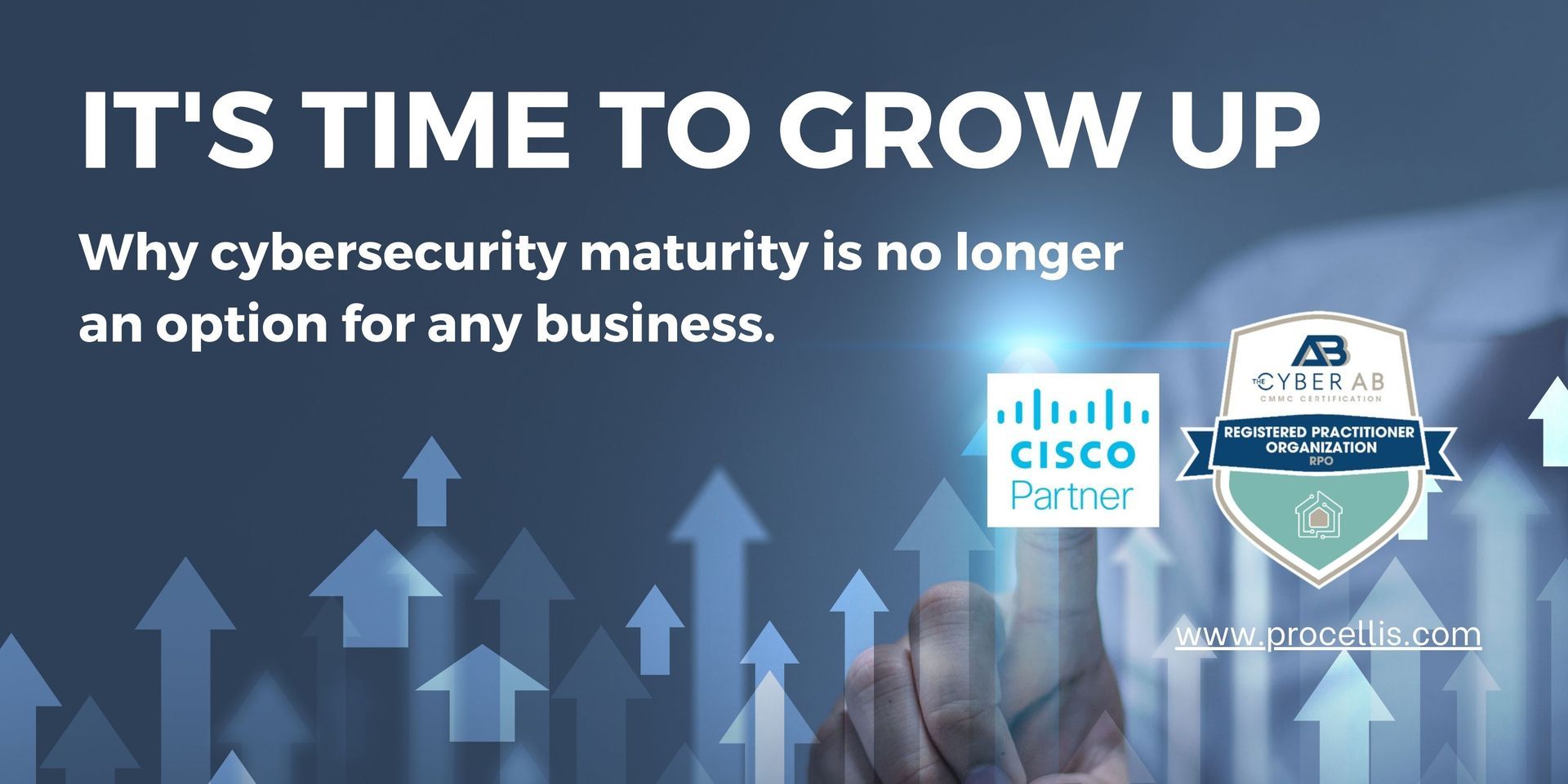
Is your IoT an Open Door for Attacks?
IoT, or the Internet of Things, devices have become a standard tool for business. Most of these devices are geared toward maintaining your facility or improving operational efficiency. In fact, IoT devices now make up the majority of devices used by any company with their numbers increasing rapidly. It’s expected that by 2025, there will be approximately 27 billion connected IoT devices.
An example of an IoT ecosystem is:
· Office devices such as Bluetooth keyboards, VoIP phones, printers, and smart monitors
· Building automation such as HVAC and lighting systems, even vending machines
· Personal devices such as smartphones, smart watches, and digital assistants
· Industry-specific devices such as robotics, medical devices, barcode scanners, and POS systems
· IT Infrastructure such as access points, routers, switches, and baseboard management controllers
The list goes on. Generally, IoT is used to maximize output, collect data, analyze behavior, create insights, monitor processes, and enhance asset tracking. And with benefits such as these, it’s no wonder that 93% of executives believe the benefits of IoT outweigh the risks.
IoT=Increasingly Open to Threats
The IoT ecosystem reveals a complicated picture with a lot of challenges, such as cybersecurity issues, privacy concerns, and an uncertain regulatory environment. Because IoT devices can be remotely monitored and controlled—a plus when it comes to climate control, medical devices, and technology infrastructure—unsecured devices can accidentally create a backdoor into your corporate network.
Unsecured and unmanaged devices are any system that can communicate with other devices and systems in your organization, process and transmit information, have an operating system (no matter how simple), but can’t be managed with your traditional security tools. With the rapid growth of IoT in business environments, implementation of these devices has gone unnoticed by internal IT security resources.
Which is a key risk. With more than 25% of all cyberattacks against businesses involving IoT, and that number is growing rapidly, when IT leaders are involved in the conversation, there is the realization that IoT security is in a category all its own.
Many IT leaders are struggling to secure IoT devices, and much of that is due to lack of understanding when it comes to security. According to a CompTIA survey, more than half of IT professionals admit they don’t fully understand the risks associated with unmanaged devices, and a whopping 80% confess they just don’t know where to even start when it comes to implementing an IoT security program.
And without a proper understanding, it can be a challenge to get adequate funding from C-suite leaders to secure IoT devices. In many cases, management doesn’t understand what constitutes as an IoT device, let alone comprehend how a small, insignificant device can leave them so vulnerable to attack and breach.
Unmanaged And Unsecured
Research and advisory firm, Forrester, surveyed more than 400 technology decision makers responsible for IoT security across a wide variety of industries. They found that when it comes to unmanaged and unsecure IoT:
· 67% experienced a security incident related to these devices
· 84% believe these devices are more vulnerable to cyberattacks than corporate-managed computers
· 69% estimate that they make up at least half of all devices on their enterprise network
· 74% feel their current security controls and practices are inadequate
· 68% believe that their level of security spending is not enough, relative to the risks
Bringing OT and IT together
Even with the staggering number of technology innovations introduced in the last decade or so, IoT is considered the most disruptive since it reinvents computing and is everywhere. With a variety of devices digitizing spaces and making them intelligent and connected, the delineation between Information Technology (IT) and Operations Technology (OT) has converged. Adopting an IoT strategy requires not only new technology, but also new business processes and collaboration.
IoT devices often fall outside the standard IT domain, but that doesn’t mean IT doesn’t play a pivotal role in securing these devices. With this step of digital transformation, technology permeates every part of your business, creating new working models that break down the current IT and OT siloes.
Building an IoT strategy requires not only operations and executives, but your IT infrastructure. In fact, most companies see a strong or moderate connection between IoT strategies and other technology initiatives within the organization, especially cloud computing, mobile devices, and artificial intelligence.
This has led to the introduction of new IoT-specific roles such as IoT architect or IoT security specialist. These technology specialists are not only highly skilled, but highly paid roles that may be out of reach for some organizations. Small and mid-sized companies may not have the ability, or desire, to hire an IoT specialist or the means to build all the in-house skills needed to manage their IoT ecosystems. That’s where Procellis can help.
Secure and manage with Procellis
Procellis is committed to building relationships by helping you realize your technological possibilities. Our combined service model and industry best practices help us identify and implement solutions that can empower your digital transformation and enable you to achieve your business goals.
Identify
We take a holistic look at your entire organization to identify all your IoT devices, both secure and unsecure, so we close your vulnerability gaps. Procellis leverages Cisco Cyber Vision to build a detailed inventory of your industrial IoT devices, and to map device communication flows to assess your IoT security posture.
Educate
We educate both management and employees across your organization about what IoT devices are and how a breach may impact your business. We also provide business leaders with a clear view into your current vulnerabilities.
Design
We create a customized security plan that reaches every IoT endpoint, while working with your current operating systems to provide seamless security from the inside out. This also includes designing and fully managing the lifecycle of your IoT security.
Manage
Our Virtual Security Team monitors and manages threats and alerts you when it’s time for a technology upgrade as your environment changes and as your business grows.
Procellis enables you to protect your business and customer data, your assets, and your reputation from persistent threats with customized layers of security that specifically address IoT. So, how many unsecured IoT devices does your business have? Zip, zero, none with Procellis.
Free E-book7 Common IoT Threats to Compliance
Contact Us
Please try again later.
You Might Also Like...
6820 Shingle Creek Parkway Suite 2 | Minneapolis, MN 55430







